|


Treat the earth well.
It was not given to you by your parents,
it was loaned to you by your children.
We do not inherit the Earth from our Ancestors,
we borrow it from our Children.
~Ancient Native Proverb~

In Native American culture, a dreamcatcher is a handmade object based on a hoop (traditionally of willow), incorporating a loose net, and decorated with items unique to the particular dreamcatcher. There is a traditional belief that a dreamcatcher filters a person's dreams, letting through only the good ones. There are related legends.
Dreams throughout history, nearly every person and culture has placed importance on the meanings of dreams - archetypical messages from 'the other side' - given by various sources - that must interpreted by their symbology and content. Today, dreams are still a powerful force in many people's lives, particularly because of the meanings that can be found in them. Whether dreams are good or bad, they can inspire, confuse, or upset the dreamer.

In the Ojibway tribe, night visions, or dreams, were so important that children were not given a name until after a person designated as the "namer" of that child had a dream as to what he/she should be called. The namer might give the child a charm woven to look like a spider's web in order to protect the baby's dreams.
Dreamcatchers are an authentic American Indian tradition, from the (Chippewa) tribe. The people would tie sinew strands in a web around a small round or tear-shaped frame - in a somewhat similar pattern to how they tied webbing for Ojibway snowshoes--and hang this "dream-catcher" as a charm to protect sleeping children from nightmares. The legend is that the bad dreams will get caught in the web.

The Dreamcatcher allegedly helps us remember our dreams. It is regarded by some as a serious tool that is much more than a decorative ornament. The opening in the center determines the volume that you are asking to receive and parallels the changes that will occur in your life.
Hang the dreamcatcher near the place where you sleep, on the wall, or perhaps from a lampshade or bedpost. Should your dreams become too active, or if you feel you need a break from the workings of your dreamcatcher, simply lay it down on a flat surface to render it inactive until you are ready to hang it up again. Beads, feathers and fetishes are not appropriate on a dreamcatcher as they interfere with the spiraling motion and can cause disturbing dreams.
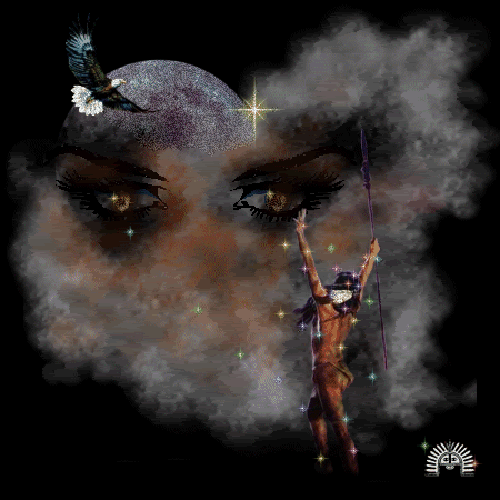

Legend
Long ago in the ancient world of the Ojibwe Nation, the Clans were all located in one general area of that place known as Turtle Island. This is the way that the old Ojibwe storytellers say how Asibikaashi Spider Woman helped Wanabozhoo bring giizis (sun) back to the people. To this day, Asibikaashi will build her special lodge before dawn. If you are awake at dawn, as you should be, look for her lodge and you will see this miracle of how she captured the sunrise as the light sparkles on the dew which is gathered there. Asibikaasi took care of her children, the people of the land, and she continues to do so to this day.
When the Ojibwe Nation dispersed to the four corners of North America, to fill a prophecy, Asibikaashi had a difficult time making her journey to all those cradle boards, so the mothers, sisters, and Nokomis (grandmothers) took up the practice of weaving the magical webs for the new babies using willow hoops and sinew or cordage made from plants.
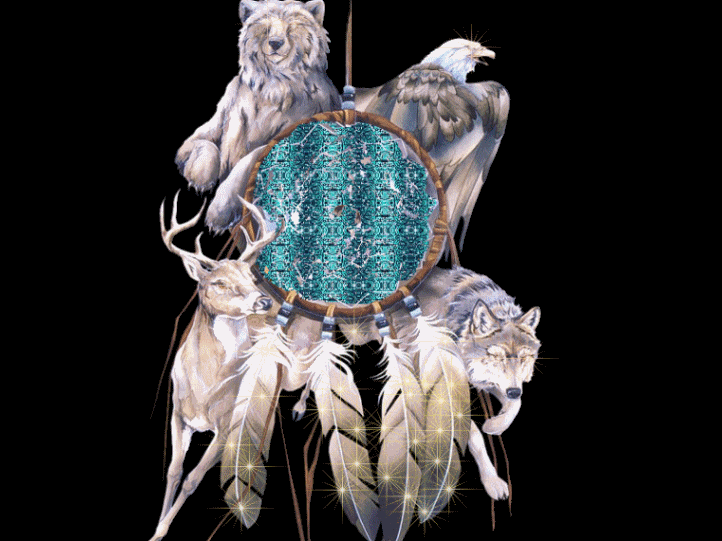
It is in the shape of a circle to represent how giizis travels each day across the sky. The dream catcher will filter out all the bad bawedjigewin (dreams) & allow only good thoughts to enter into our minds when we are just abinooji. You will see a small hole in the center of each dream catcher where those good bawadjige may come through. With the first rays of sunlight, the bad dreams would perish. When we see little asibikaashi, we should not fear her, but instead respect and protect her. In honor of their origin, the number of points where the web connected to the hoop numbered 8 for Spider Woman's eight legs or 7 for the Seven Prophecies.
It was traditional to put a feather in the center of the dream catcher; it means breath, or air. It is essential for life. A baby watching the air playing with the feather on her cradleboard was entertained while also being given a lesson on the importance of good air.
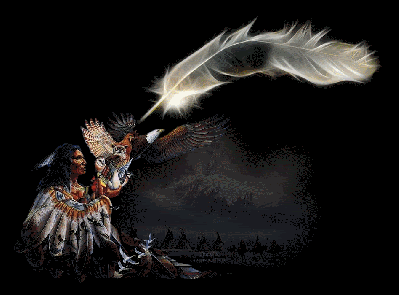
This lesson comes forward in the way that the feather of the owl is kept for wisdom (a woman's feather) and the eagle feather is kept for courage (a man's feather). This is not to say that the use of each is restricted by gender, but that to use the feather each is aware of the gender properties she/he is invoking. (Indian people, in general, are very specific about gender roles and identity.)
The use of as we do in the ones we make for sale, is not something that was done by the old ones. Government laws have forbidden the sale of feathers from our sacred birds, so using four gemstones, to represent the four directions, and the stones used by western nations were substituted by us.

Legend 2
Long ago when the world was young, an old Lakota spiritual leader was on a high mountain and had a vision. In his vision, Iktomi, the great trickster and teacher of wisdom, appeared in the form of a spider. Iktomi spoke to him in a sacred language that only the spiritual leaders of the Lakota could understand. As he spoke Iktomi, the spider, took the elder's willow hoop which had feathers, horse hair, beads and offerings on it and began to spin a web. He spoke to the elder about the cycles of life ... and how we begin our lives as infants and we move on to childhood, and then to adulthood. Finally, we go to old age where we must be taken care of as infants, completing the cycle.
"But," Iktomi said as he continued to spin his web, "in each time of life there are many forces -- some good and some bad. If you listen to the good forces, they will steer you in the right direction. But if you listen to the bad forces, they will hurt you and steer you in the wrong direction." He continued, "There are many forces and different directions that can help or interfere with the harmony of nature, and also with the great spirit and-all of his wonderful teachings.
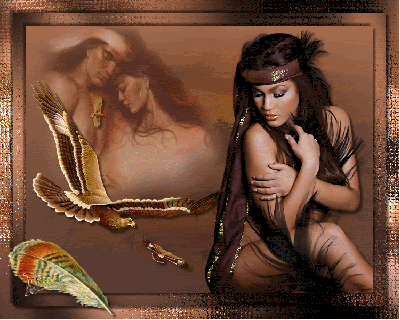
"All the while the spider spoke, he continued to weave his web starting from the outside and working toward the center. When Iktomi finished speaking, he gave the Lakota elder the web and said..."See, the web is a perfect circle but there is a hole in the center of the circle." He said, "Use the web to help yourself and your people to reach your goals and make good use of your people's ideas, dreams and visions. "If you believe in the great spirit, the web will catch your good ideas -- and the bad ones will go through the hole." he Lakota elder passed on his vision to his people and now the Sioux Indians use the dream catcher as the web of their life. It is hung above their beds or in their home to sift their dreams and visions. The good in their dreams are captured in the web of life and carried with them...but the evil in their dreams escapes through the hole in the center of the web and are no longer a part of them. They believe that the dream catcher holds the destiny of their future.
">
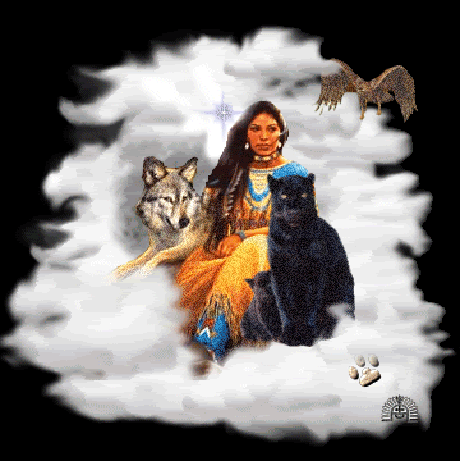
info by: http://www.crystalinks.com/dreamcatcher.html
background and graphics by:

 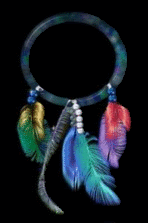
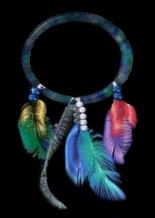
|